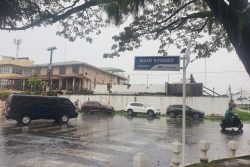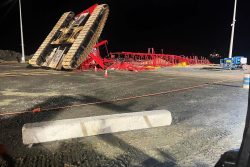Dear Editor,
In the link below, oak barrels stacked with the ageing rum of DDL can be seen.
My father and a number of other Hinds men were coopers (tradesmen making barrels and other liquid containing vessels out of wood) in the Bookers, Sandbach Parker and other cooperages of those days. I recall in 1952, my father speaking of the growing rumours in the cooperage, of stainless steel vessels and barrels being introduced for some stages of the processing; and the talk and his dreams of the fear of retrenchment from jobs that did not pay a living wage. Indeed, he was soon retrenched and never again obtaining a regular cooper job, the honourable trade of his father and many before to which he stuck, it was an even more unstable future thereafter for us.
That experience was to return to haunt me, when at the beginning of the1980s, I was fully aware of the great reduction in production and the great losses we were incurring in our nationalized bauxite industry. Retrenchment was inevitable. Soon I was tasked with drawing up a reduced workforce for my Division, a one third reduction at every level. And could I have had any doubt that at the rarefied levels above me extending to our World Bank and IMF handlers there would be similar considerations including me! I survived – perhaps I owe some to that same Bookers now DDL cooperage.
In mid-1976 Guyana was out of alum for clarifying water in its water preparation plant in Georgetown. Even if it had the money it would have taken some six months to a year to get the stock replenished. Georgetown would have had to live that long with brown Lamaha water unclarified in all its taps. We had a number of customers who bought our bauxite to make alum for sale in their areas. One friendly one was Mr. “Dutch” Holland in the Boston, Massachusetts area. In our labs the technicians would occasionally fool around making alum in glass beakers on the lab counters. We had the materials and with industrial scale guidance from “Dutch” it seemed that we could make the alum Guyana required.
The big problem was the vessel in which to cook the alumina hydrate (purified bauxite) in the strong enough, hot enough sulphuric acid and the tanks in which to store the no less corrosive 50% alum solution. Dutch kept saying that Carpenter 20 stainless steel would do the job but was woefully expensive, and other no less daunting alternatives. For a number of reasons, I said let’s try a wooden vat made of our wallaba. And so we did. And so it was that in 1976 I paid my first conscious trip to the former Bookers Cooperage, a place where my father had worked for about 20 years (1930 to 1952). One or two old coopers recalled my father, Archie, as some others who had turned to other jobs had done when I began working at the bauxite company in Linden in 1967.
Jimmy Kranenburg, my boss, Deputy CEO, observing our alum operations, remarked that Dr. Faust stepping out of the play by Goethe and the alchemists stepping out of the Middle Ages would have felt very comfortable at my plant cooking hydrate in fuming sulphuric acid in a wooden vat. We learnt many things along the way and I became steadily more proud and pleased with our operations, supplying all alum used in Guyana, delivering to the “Shelter Belt” in Georgetown, the plants around Linden and the small plants in Bartica and Kwakwani, until, on another WB/IMF arrangement of about 1988/89 importation of alum was resumed as the bauxite industry was stripped to its core to be made ready for any possible privatization.
“Dutch” was very impressed with the performance of our wallaba wood of which our vat, our chemical reactor vessel was fabricated. He contacted the National Wood Tank and Pipe Institute of North America and learnt that there would be a great market for wallaba (in one inch thick planks) replacing their prized red cedar which was becoming scarce. However, there was no such production in Guyana and no one was then thinking of making the investments in the possibilities of developing such a sector. Some markets may still be there.
Yours faithfully,
Samuel A A Hinds





